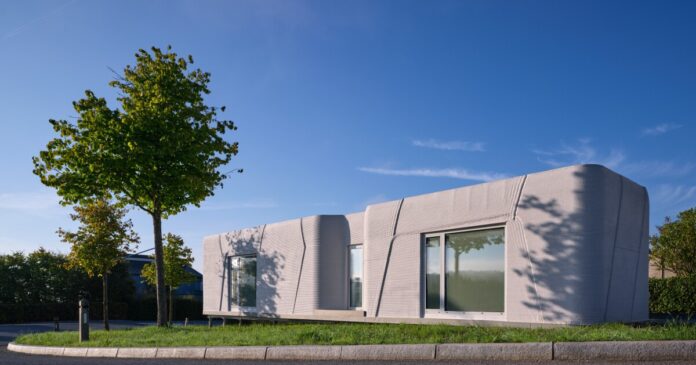3D-printed architecture has evolved from futuristic concept to everyday construction technique at lightning speed – and the pace shows no sign of slowing down anytime soon. A recent example of this progress comes in the form of a non-towable tiny house that was printed in just one week.
The project, named Tiny House Lux, was designed by Luxembourg-based ODA Architects – not to be confused with the other, more famous ODA. It was created in collaboration with ICE Industrial Services and its Coral Construction Technologies division for local authorities in Niederanven, Luxembourg, as a way to help tackle housing shortages.
“Luxembourg faces a clear housing shortfall,” explains ODA Architects. “The country needs about 7,000 new homes each year, yet only around 3,600 are built, and fewer than 200 of those fall under public or affordable programs. Municipalities are searching for ways to use the small, leftover plots that sit inside existing neighborhoods. Many of these parcels are written off as too narrow or too irregular for conventional construction. The Tiny House project asks a simple question. What if these sites became a new source of compact, high-quality homes that keep people close to their communities?”
BoysPlayNice
The tiny house is situated on an awkwardly long and narrow plot with a width of 3.5 m (11.5 ft), and a depth of 17.7 m (58 ft). It was 3D printed onsite over the course of a week using cement from a local plant, to which additives were mixed in to make it suitable for printing. This mixture was extruded through a nozzle in layers by a Coral 3D printer to create the basic shell of the house. Once the 3D printer had completed its work, human builders then stepped in to finish off the home, adding a roof, windows, a door, and everything else needed to turn a shell into a home. Their work took another three weeks.
It cantilevers on a slight slope and sits on screw foundations, minimizing ground disturbance compared to traditional concrete foundations and making potential dismantling or relocation simpler later in the building’s life. Roof-based solar panels provide electricity and its walls display the telltale ribbed texture that’s characteristic of 3D printing.
The interior measures 47 sq m (505 sq ft), which is arranged on one floor. Generous glazing helps fill it with daylight and there’s a lot of integrated storage space. The roughly center of the home is occupied by the kitchen, which has an oven and sink, plus a breakfast bar-style dining area. The living room is adjacent and includes seating and space for a TV.
Elsewhere in the home lies a bathroom and the single bedroom. The latter includes a Murphy style bed that can be stowed away when not in use, as well as a small desk area. Additionally, an underfloor heating system keeps toes toasty in colder weather.

BoysPlayNice
Looking to the future, ODA Architects suggests the tiny house could be built elsewhere. The big question, of course, is cost. On this note, its €320,000 (roughly US$370,000) budget sounds a little high to this writer, but according to local real estate listings, homes in Niederanven typically cost significantly more.
Source: ODA Architects


